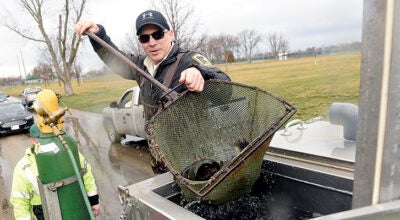Full Circle: A Dark Time Remembered
Published 5:15 pm Saturday, January 20, 2018
Polio. The very sound of the word chilled us into a paralytic panic. There was absolutely no hiding from it and there was no predicting whom it would strike next. An active, healthy child would come down with it while his siblings went untouched. More terrifying than even Jack the Ripper—Jack took only one victim at a time—polio struck down swaths of people in a single day.
Poliomyelitis is an acute viral disease characterized by inflammation of the motor neurons of the brain stem and spinal cord resulting in motor paralysis, muscular atrophy and permanent deformities. Adding to the terror was the multiple curse of not knowing where the disease came from, having no cure for it, lacking any viable treatment for it, and the most cruel torment of all—it primarily affecting children.
Folks in Austin did everything they could to prevent the spread of polio. They quarantined certain areas, covered open drains and screened windows. All public drinking fountains were shut off. Movie theaters, swimming pools, camps, schools and restaurants were closed. Public gatherings were canceled. Even military draft inductions were suspended. Still, polio could not be contained. Flummoxed health inspectors, doctors and nurses had to admit they knew neither what they were looking for nor where they might find it.
The worst epidemic was in 1952 when three thousand Americans died from polio. Ironically, scores of other people who actually had the disease were not even aware of it and those who did were fortunate to recover with little or no disability. Particularly cruel, polio paradoxically skipped over the aged and infirm and struck instead the healthy people.
For many there was only one thing worse than dying of paralytic poliomyelitis … living with it!
What were the symptoms of polio? Some victims felt mildly ill for a day or two, but not so much as to curtail their daily activities. Then a few days later they would suddenly lose control of their limbs. Doctors knew only to put them in casts or drape hot packs of wet wool around their limbs to keep, they hoped, the muscles from going into spasms. Some hospitals refused polio patients, leaving them to do whatever they could at home. Braces and crutches were sparse, expensive, heavy and painful to use. Elevators were uncommon and ramps for the handicapped were nonexistent.
If all this were not enough to make one’s blood run cold, there was one more even more stupefying fear. The iron lung. It was a long metal cylinder into which the patient’s entire body was ensconced with only his head collared off at one end. It functioned to clear the lungs of mucus, help the patient to breathe, and fed him through a tube.
In rural Oklahoma, there is one such victim still living today. Martha Ann Lillard has spent more than six decades of her life inside an 800-pound iron lung. She was a kindergartner in 1953 when one morning she awoke with a sore throat. It quickly developed into a life-threatening disease. Only the day before she and her friends had been licking pancake dough off their fingers from a communal bowl. Needless to say, the diagnosis left a trail of terrorized parents and children in its wake.
Martha Ann is one of an estimated eight polio survivors in the U.S. who are still living in iron lungs. Her existence depends upon her body being enclosed in the iron capsule with an airtight seal around her neck. She lies on a goose down comforter and has electric switches by her side that allow her to roll her tray-like “bed” in and out of the cylinder. Lillard’s iron encasement was built in the 1940s and runs on a fan belt motor which, she explains, “her friends continue to help patch together whenever it breaks down.”
“An iron lung actually feels wonderful … when you can’t breathe!” exclaims Martha Ann. On occasion she leaves it, walking with great difficulty for short distances. The reality of her situation is that she doesn’t often want to leave the security of it where her breathing is mechanically done for her. Despite these hardships, Martha Ann is a chatty, effervescent, 4′ 9”, hundred-pound lady. She lives with a housemate and three beagles, keeping in touch with friends by phone and computer.
Martha Ann Lillard’s crippling disease has taught her to endure much. She says she asks “why me?” all the time, but doesn’t get answers. “And after you ask so many times and receive no replies,” she continues, “ you just go on. And on.”
(To be continued.)



